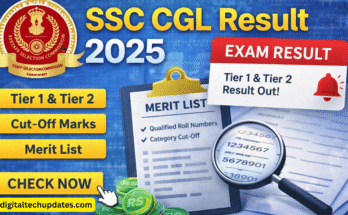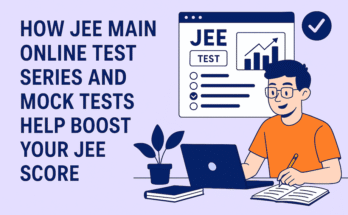Introduction
Scrum is one of the most widely used agile frameworks in project management today. Organizations around the world are adopting Scrum to improve productivity, streamline workflows, and deliver high-quality products.
If you are a project manager, software developer, or business professional looking to advance your career, asking “How do you become Scrum certified?” is the first step toward enhancing your credentials and mastering agile project management.
In this guide, we’ll cover everything you need to know about Scrum certifications, including types, prerequisites, training, exam preparation, costs, and career benefits.
What is Scrum Certification?
Scrum certification is a professional credential that demonstrates your understanding of Scrum principles, practices, and roles. It proves your ability to facilitate Scrum teams, manage agile projects, and apply Scrum frameworks in real-world scenarios.
Benefits of Scrum Certification
Boosts credibility in agile project management
Increases career opportunities and potential salary
Provides knowledge to lead Scrum teams effectively
Helps organizations adopt Scrum successfully
Types of Scrum Certification
Scrum certifications are offered by various organizations, each with its own focus and career path.
a) Certified ScrumMaster (CSM)
Offered by Scrum Alliance
Focus: Scrum Master responsibilities, team facilitation, and agile coaching
Requirements: Attend a 2-day in-person or online training
Exam: Multiple-choice questions, 60 minutes, passing score ~74%
b) Professional Scrum Master (PSM)
Offered by Scrum.org
Levels: PSM I, PSM II, PSM III
Focus: Scrum principles, advanced problem-solving, real-world application
Exam: Online, multiple-choice questions, PSM I requires 85% to pass
c) Certified Scrum Product Owner (CSPO)
Offered by Scrum Alliance
Focus: Product Owner responsibilities, backlog management, and stakeholder communication
Training: Required course; no exam needed
Ideal for product managers and business analysts
d) Advanced Scrum Certifications
A-CSM (Advanced Certified ScrumMaster): For experienced Scrum Masters
SAFe Scrum Master (Scaled Agile Framework): For managing agile at enterprise scale
Certified Scrum Professional (CSP): Advanced mastery of Scrum practices
Prerequisites for Scrum Certification
While most Scrum certifications are entry-friendly, some experience can help:
CSM: No prior experience required; familiarity with agile concepts is helpful
PSM: No prerequisites for PSM I; advanced levels require experience
CSPO: No prerequisites, recommended for Product Owners or business roles
A-CSM / CSP: Requires prior Scrum Master certification and experience
Step-by-Step Guide: How to Become Scrum Certified
Here’s a complete roadmap to achieve Scrum certification:
Step 1: Choose the Right Certification
Select a certification that aligns with your career goals:
CSM or PSM: For Scrum Masters and team facilitators
CSPO: For Product Owners
Advanced or Scaled Certifications: For experienced professionals
Step 2: Attend Training (If Required)
CSM and CSPO: Must attend an approved training course
PSM: Optional, self-study is sufficient for PSM I
Step 3: Study the Scrum Guide
Official Scrum Guide by Ken Schwaber and Jeff Sutherland
Focus on: Roles (Scrum Master, Product Owner, Development Team), Events (Sprint, Sprint Planning, Daily Scrum), and Artifacts (Product Backlog, Sprint Backlog, Increment)
Step 4: Use Practice Tests and Study Resources
Online mock exams and quizzes
Agile community discussions and forums
Books like Scrum Mastery and Agile Estimating and Planning
Step 5: Register for the Exam
CSM: Online exam after course completion
PSM: Online exam available immediately after purchase
CSPO: No exam; certificate issued after training
Step 6: Take the Exam
Prepare for scenario-based questions and multiple-choice questions
Time management is key for PSM exams (e.g., 80 questions in 60 minutes)
Step 7: Earn and Maintain Certification
CSM: Requires renewal every 2 years
PSM: No renewal required
Advanced certifications may require continuous education
5. Tips to Pass Scrum Certification Exam
Master Scrum Roles and Responsibilities
Scrum Master, Product Owner, Development Team
Understand Scrum Events Thoroughly
Sprint Planning, Daily Scrum, Sprint Review, Sprint Retrospective
Learn Scrum Artifacts in Depth
Product Backlog, Sprint Backlog, Increment, Definition of Done
Practice Real-World Scenarios
Apply Scrum theory to practical project situations
Take Multiple Mock Exams
Helps familiarize with question types and exam structure
Join Scrum Communities
Engage with forums, online groups, and study circles for tips
6. Costs of Scrum Certification
CSM: $500–$1000 (includes training and exam)
PSM I: $150 (exam only)
CSPO: $500–$1000 (training, no exam)
Advanced / Scaled Scrum Certifications: $1000+
7. Career Benefits of Scrum Certification
Higher salary potential for Scrum Masters and Product Owners
Greater demand for certified professionals in agile teams
Enhanced credibility for leadership and consulting roles
Improved ability to manage projects efficiently and adapt to change
8. Common Mistakes to Avoid
Skipping study of the official Scrum Guide
Ignoring practical application of Scrum in real projects
Overlooking exam time management for multiple-choice tests
Neglecting mock exams and practice questions
Not joining Scrum communities for additional insights
9. FAQs About Scrum Certification
Q1: How long does it take to become Scrum certified?
A: Depending on training and preparation, it can take 1–4 weeks for entry-level certifications.
Q2: Can I get Scrum certified online?
A: Yes, both training and exams are available online for most certifications.
Q3: Which is better: CSM or PSM?
A: CSM is beginner-friendly with training included; PSM focuses more on self-study and advanced assessment.
Q4: Does Scrum certification expire?
A: CSM must be renewed every 2 years; PSM certifications do not expire.
Q5: Do I need prior experience to get certified?
A: No prior experience is needed for CSM or PSM I; experience helps with advanced certifications.
10. Resources to Help You Prepare
Scrum Guide: scrumguides.org
Books: Scrum Mastery, Agile Estimating and Planning
Online Courses: Udemy, Coursera, Scrum Alliance training providers
Practice Exams: Available on Scrum.org and community forums
Conclusion
Becoming Scrum certified is an essential step for anyone pursuing a career in agile project management. By selecting the right certification, attending training, studying the Scrum Guide, practicing mock exams, and applying real-world scenarios, you can achieve Scrum certification successfully.
Whether you aim to be a Scrum Master, Product Owner, or agile leader, certification demonstrates your knowledge, improves career prospects, and helps teams adopt Scrum effectively.




